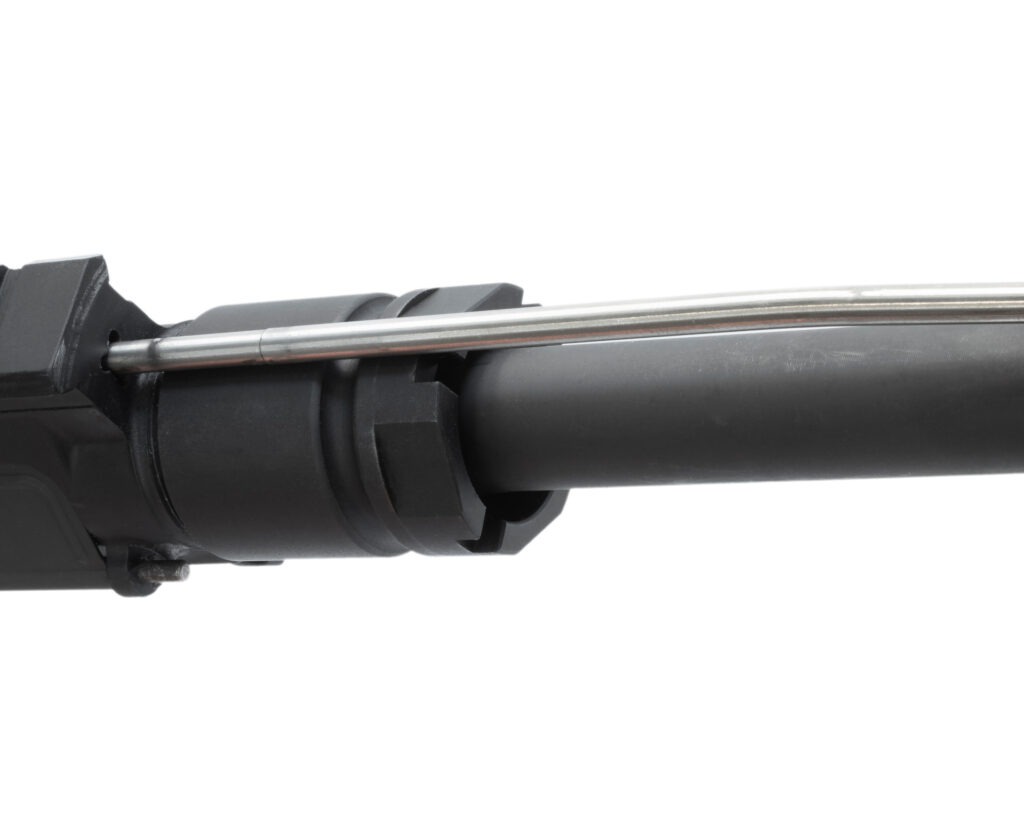Regarding the popular AR-15 semi-automatic rifle, one aspect that often confuses new shooters is the available gas systems. Let’s take a closer look at the two main gas systems used in the AR-15: direct impingement and gas piston.
Direct Impingement System
The direct impingement system is the original gas system used in the AR-15. In this system, the expanding gas from the fired cartridge is directed through a gas tube and into the bolt carrier. This gas pressure pushes the bolt carrier backward, which cycles the action to eject the spent cartridge and chamber a new round.
Advantages of Direct Impingement
- Lightweight and compact: Direct impingement systems have fewer metal pieces and less overall weight, making them a popular choice for shooters who value a lightweight rifle for hunting or competition.
- Affordable: Direct impingement rifles are generally cheaper than gas piston systems.
- Free-floated barrels: Since there’s no direct physical contact between the gas tube and the gun’s action, barrels can be “free-floated,” making them considerably more accurate than gas piston systems.
Disadvantages of Direct Impingement
- Susceptible to fouling and overheating: Because the gas and carbon from the fired cartridge are directed into the bolt carrier, direct impingement systems can build up debris and carbon, causing the rifle to malfunction or fail to cycle correctly.
- Runs hotter and dirtier: As the gas and carbon dust is blown back into the chamber and barrel, direct impingement systems generally run hotter and dirtier than gas piston systems.

AR-15 barrel nut with gas tube and barrel isolated on white
Gas Piston System
In a gas piston system, the expanding gas is directed into a piston, pushing the bolt carrier to cycle the action. This keeps the gas and carbon away from the bolt carrier, which helps to prevent fouling and overheating.
Advantages of Gas Piston Systems
- Reliable and cleaner: Gas piston systems are generally more reliable and cleaner than direct impingement systems as they keep gas and carbon fouling from entering the “shooty parts” of the gun.
- Durable: Gas piston systems are generally more durable and can withstand more abuse than direct impingement systems.
Disadvantages of Gas Piston Systems
- Heavier and more expensive: Gas piston systems are typically heavier and more costly than direct impingement systems.
- Less maneuverable: As the piston is located above the barrel, gas piston systems are generally longer than direct impingement systems, making them less maneuverable.

Warsaw, Poland – April 13, 2011: Heckler & Koch HK416 CQB on Europoltech Fair of Technology and Equipment for Police and National Security Services
Side Charge AR-15
When it comes to selecting a rifle, choosing between a direct impingement and gas piston system can come down to personal preference and intended use. Weighing the advantages and disadvantages is essential to make the right decision. Direct impingements are often associated with lightweight construction, affordability, and convenience, while gas pistons offer increased reliability and durability.
If you’re looking for an excellent foundation for your next build, the Side Charge AR-15 Designs from Critical Objectives should be considered. Not only do they offer unique quality firearms that bring you top performance, but also a distinctive look that will catch eyes at the range. With this rifle, you’re sure to garner great respect from your peers and enjoy its flexibility and function.

